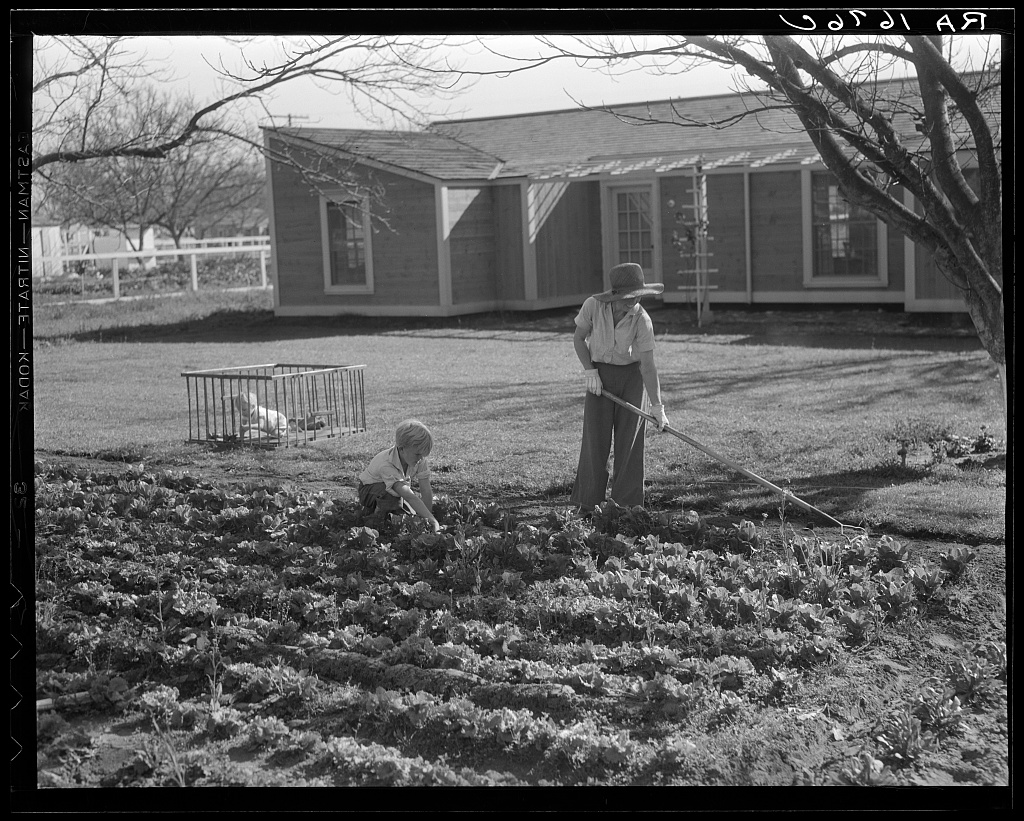Subsistence Homesteads

El Monte Federal subsistence homesteads. One hundred homes, each with three quarters of an acre land, all occupied. Average family income, eight hundred dollars per annum, (1936). Dorothea Lange for the U.S. Farm Security Administration/Office of War Information, Photographer. Library of Congress, Prints and Photographs Division. LC-USF34-001676-C.
Between 1933 and 1935, the federal Division of Subsistence Homesteads (DSH) created thirty-four New Deal communities....The homesteads were organized as examples of how the country could benefit from a proliferation of semirural neighborhoods, where part-time farming on inexpensive but desirable land would encourage uplifting social functions and help establish a better way of life. Combining the benefits of rural and urban living...the communities were to encompass a new expression of some basic American values and demonstrate the path toward a healthier and more economically secure future.
Carriker, Robert M. (2010). Urban Farming in the West: A New Deal Experiment on Subsistence Homesteads. Tucson, AZ: The University of Arizona Press, p. 5
In response to the Great Depression, a Federal housing program was created in 1933 that aimed to improve the living conditions of people coming from overcrowded urban centers, while simultaneously giving them a new opportunity to experience small-scale farming and home ownership. "The homesteads were organized as examples of how the country could benefit from a proliferation of semirural neighborhoods, where part-time farming on inexpensive but desirable land would encourage uplifting social functions and help establish a better way of life. Combining the benefits of rural and urban living (rurban), the communities were to encompass a new expression of some basic American values and demonstrate the path toward a healthier and more economically secure future." Carriker, R.M. (2010). Urban Farming in the West: A New Deal Experiment in Subsistence Homesteads. Tucson: University of Arizona Press, p. 3. After being transferred among several different agencies, the program officially ended in 1937.
This review of the Subsistence Homestead program showcases the materials produced by the Department of Agriculture to help the public take part in this form of "rurban" life.
 An official website of the United States government.
An official website of the United States government.

